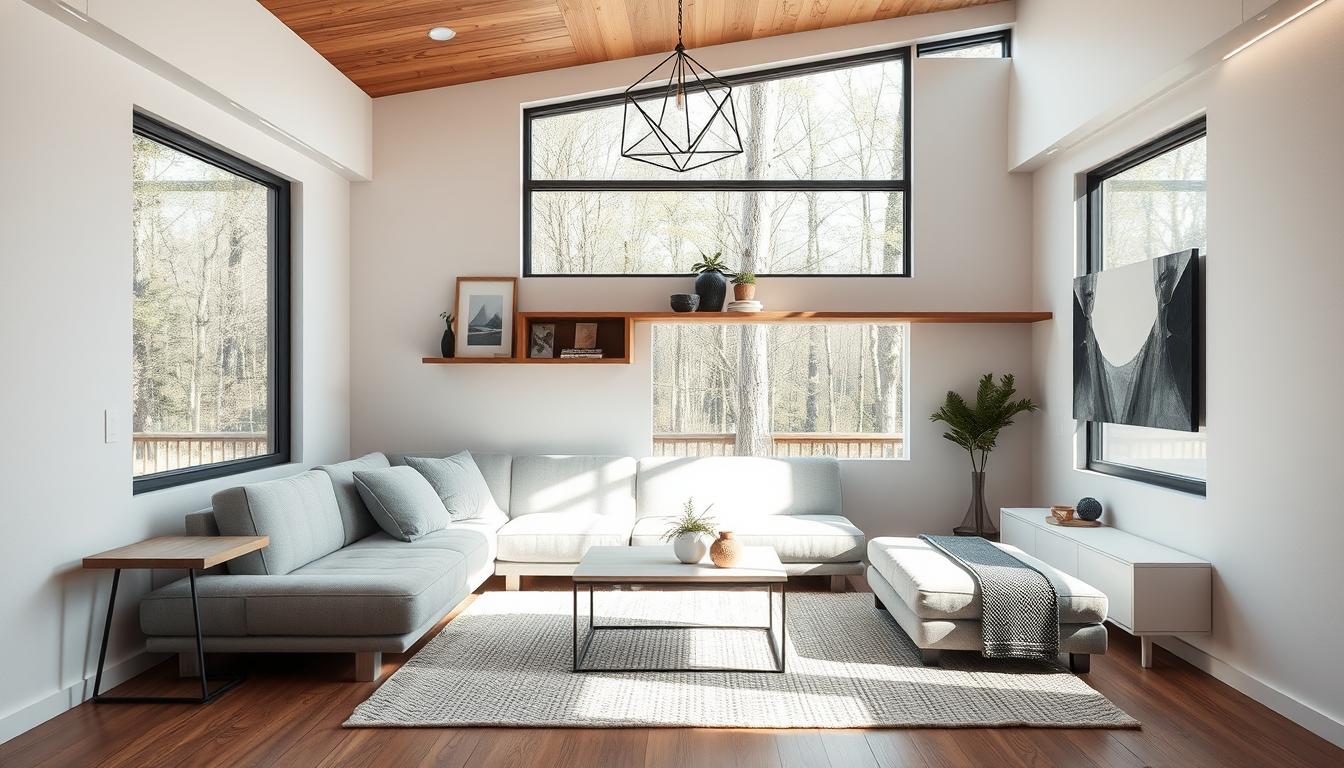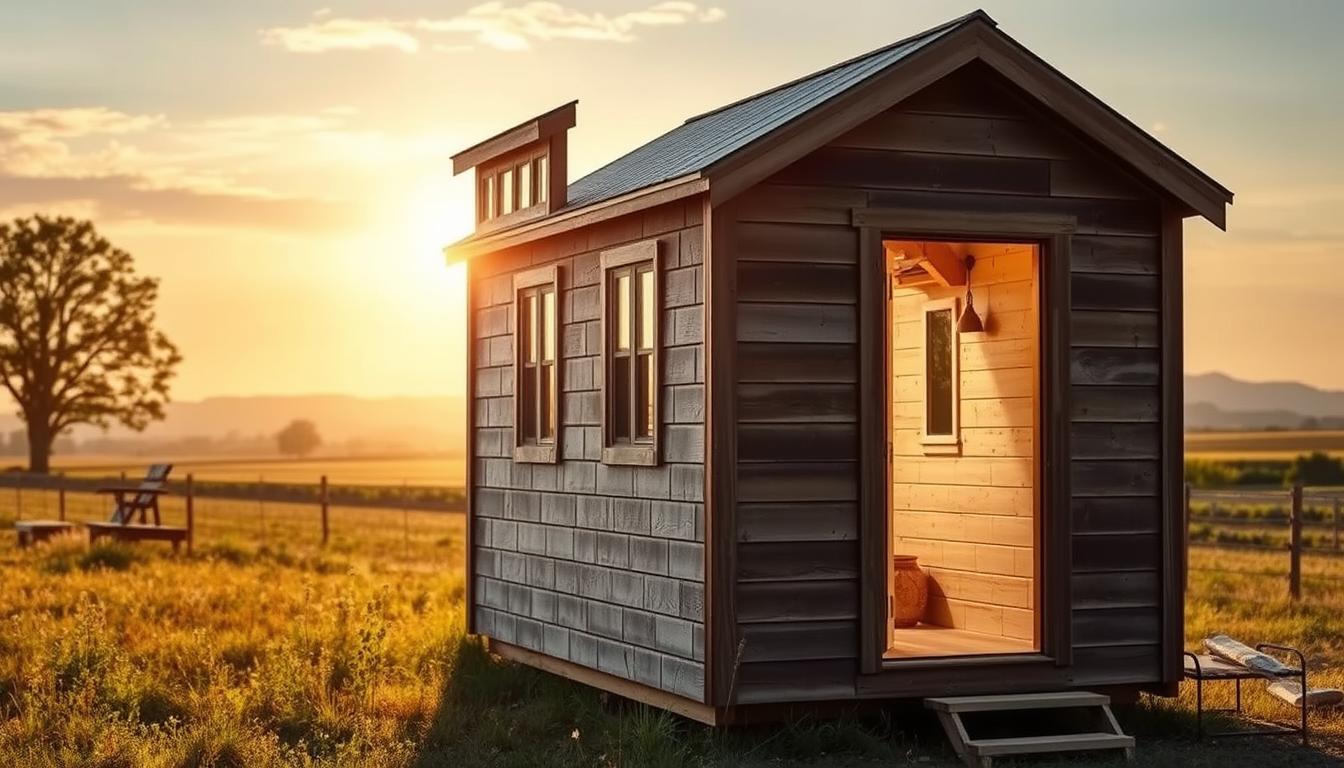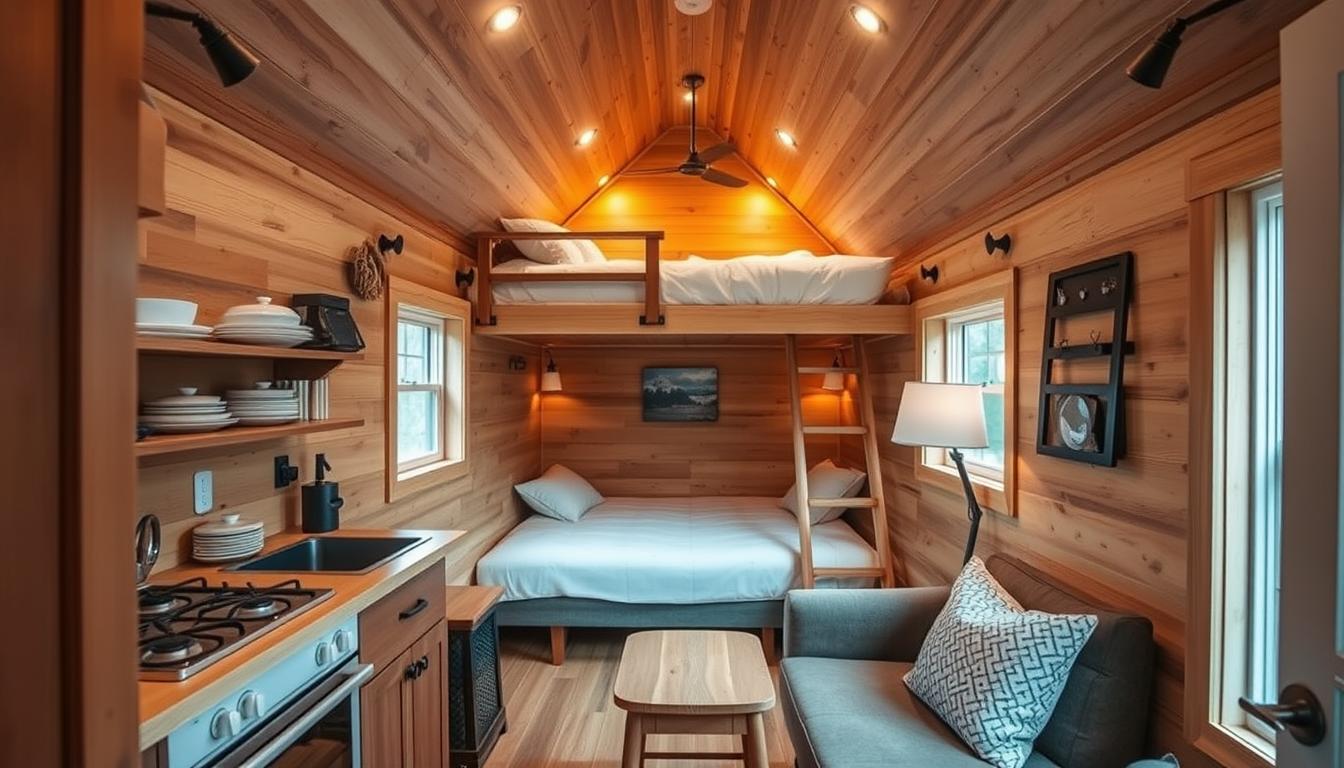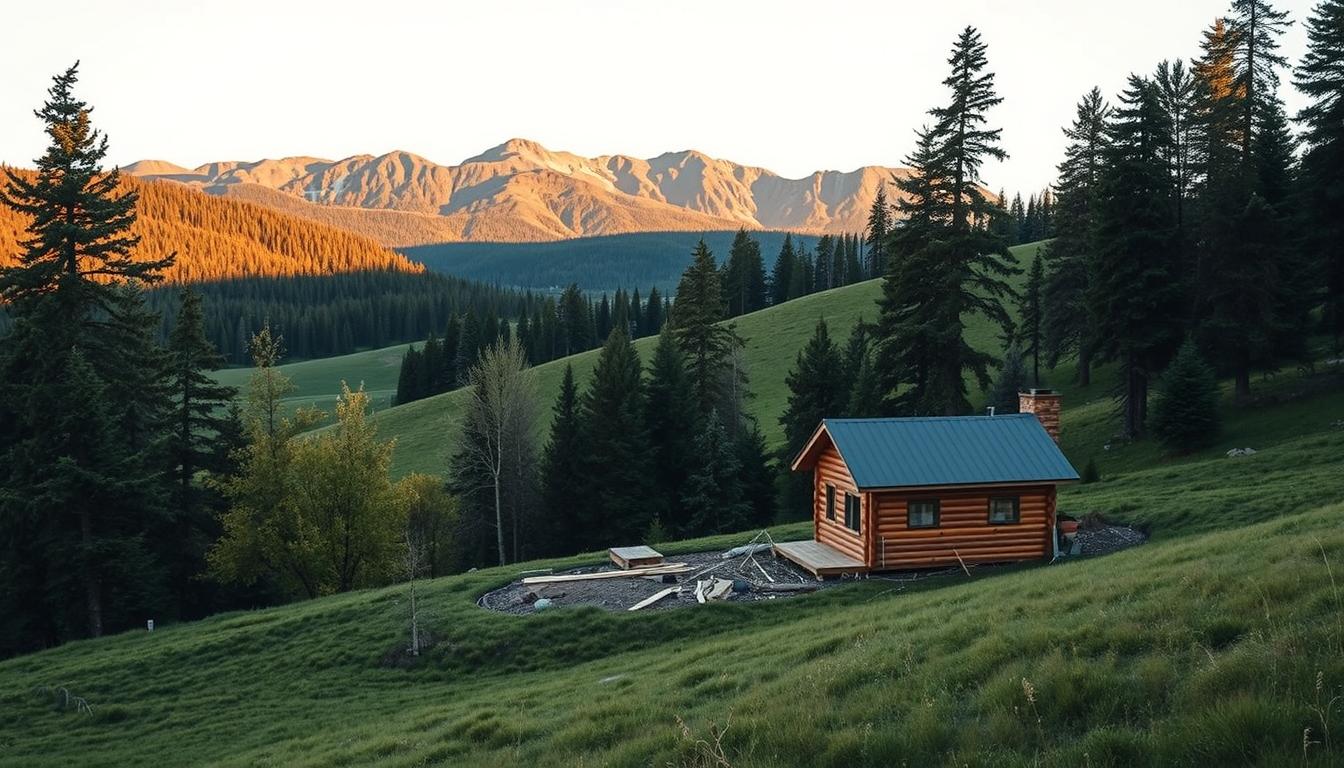What You Will Learn About Two-Bedroom Tiny Houses
By reading this article, you will learn:
– Benefits of two-bedroom tiny houses for small families and guests/home office space
– Design considerations for maximizing space efficiency and innovative storage solutions
– Cost considerations, building regulations, sustainability, and lifestyle aspects of two-bedroom tiny houses
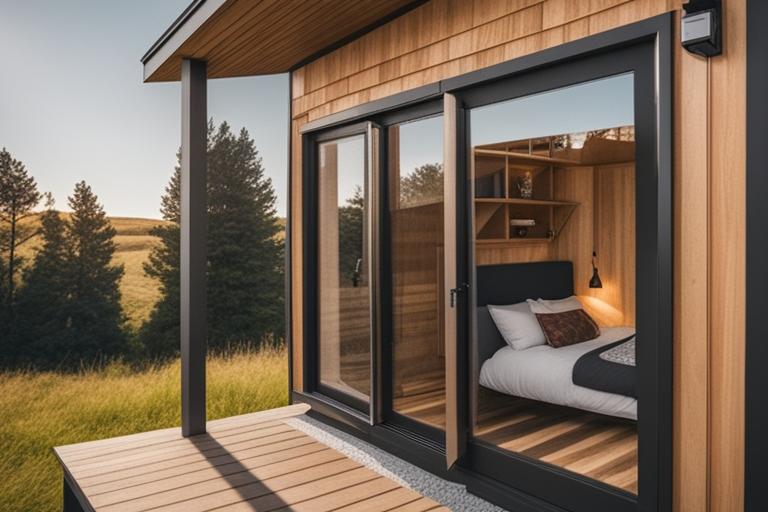
Defining Two-Bedroom Tiny Houses
When it comes to innovative and sustainable housing solutions, the concept of two-bedroom tiny houses has gained significant traction in recent years. These compact dwellings integrate two separate bedrooms within limited square footage, prioritizing functionality and space efficiency without compromising on style and comfort.
Comparison with traditional homes and other tiny house designs
In comparison to traditional homes, two-bedroom tiny houses are characterized by their minimalistic footprint and efficient use of space. Additionally, the inclusion of two distinct bedrooms sets them apart from other tiny house designs, catering to individuals or small families seeking a balance between minimalism and functionality.
Benefits of Two-Bedroom Tiny Houses
Suitable for small families
Two-bedroom tiny houses offer an ideal housing solution for small families seeking to downsize or adopt a more sustainable lifestyle. The inclusion of two separate bedrooms provides privacy and personal space, making it a practical choice for accommodating parents and a child or two siblings.
Providing space for guests or home office
The additional bedroom in a two-bedroom tiny house can serve as a versatile space, accommodating guests or functioning as a home office, offering flexibility in usage to suit the occupants’ needs.
Flexibility in usage and design
The presence of two bedrooms in a tiny house allows for diverse usage options, such as creating a dedicated kids’ room, a hobby space, or a storage area, showcasing the adaptability and customization potential of these dwellings.
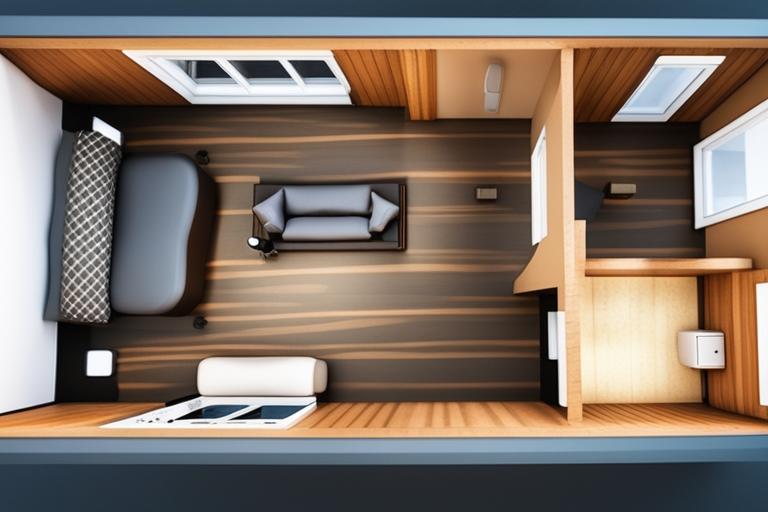
Design Considerations for Two-Bedroom Tiny Houses
Floor plan options and design considerations
When designing a two-bedroom tiny house, careful consideration of the floor plan is essential to optimize space utilization and ensure a comfortable living environment. Open-concept layouts, loft bedrooms, or creative room partitioning are popular design choices to maximize functionality within the limited square footage.
Innovative storage solutions in limited space
Incorporating innovative storage solutions, such as multi-functional furniture, built-in cabinets, and hidden storage compartments, is crucial to address the challenge of limited space in two-bedroom tiny houses while maintaining a clutter-free and organized living area.
Maximizing space efficiency through design and layout
Efficient space utilization through clever design and layout choices, including maximizing natural light, strategic placement of windows, and incorporating space-saving appliances, contributes to a sense of openness and comfort within the confined quarters of a two-bedroom tiny house.
Building and Zoning Regulations
Overview of building codes and regulations
Navigating building codes and regulations is imperative when planning a two-bedroom tiny house construction. Compliance with safety and construction standards is essential to ensure the structural integrity and habitability of the dwelling.
Zoning considerations impacting construction and placement
Zoning regulations play a significant role in determining the permissibility of constructing and placing a two-bedroom tiny house within specific areas. Understanding zoning ordinances and restrictions is crucial to avoid legal complications and ensure the feasibility of the project.
Legal aspects of building and owning a two-bedroom tiny house
Ownership and legal considerations, including land tenure, property taxes, and local ordinances, need to be thoroughly researched and addressed to ascertain the legal standing and obligations associated with owning a two-bedroom tiny house.
Cost Considerations
Materials, labor, and construction costs
Managing costs effectively by selecting durable yet cost-efficient materials and engaging skilled labor is pivotal in controlling the overall expenses of constructing a two-bedroom tiny house.
Additional expenses and cost comparisons with traditional homes
Considering additional expenses, such as utility connections, off-grid capabilities, and maintenance costs, is essential when evaluating the overall affordability and long-term financial implications of a two-bedroom tiny house in comparison to traditional homes.
Financial factors to consider when planning a two-bedroom tiny house
Financial planning, including budgeting for construction, ongoing expenses, and potential resale value, requires meticulous attention to detail to ensure a well-managed and sustainable investment in a two-bedroom tiny house.
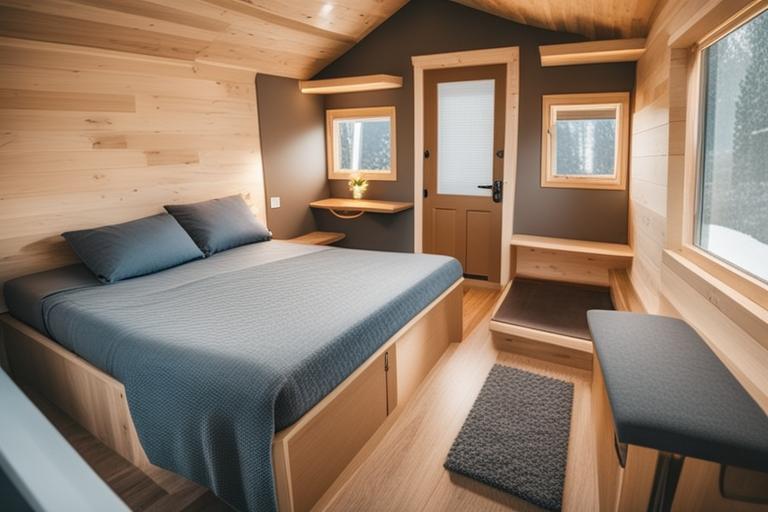
Case Studies and Examples
Real-life examples showcasing two-bedroom tiny houses
Exploring real-life examples and case studies of creatively designed two-bedroom tiny houses offers valuable insights into the diverse approaches and innovative solutions adopted by homeowners and designers within this niche housing segment.
Highlighting diverse design approaches and innovative solutions
Examining the diverse design approaches, architectural styles, and innovative space-saving solutions implemented in two-bedroom tiny houses serves as an inspiration for individuals contemplating a similar housing choice.
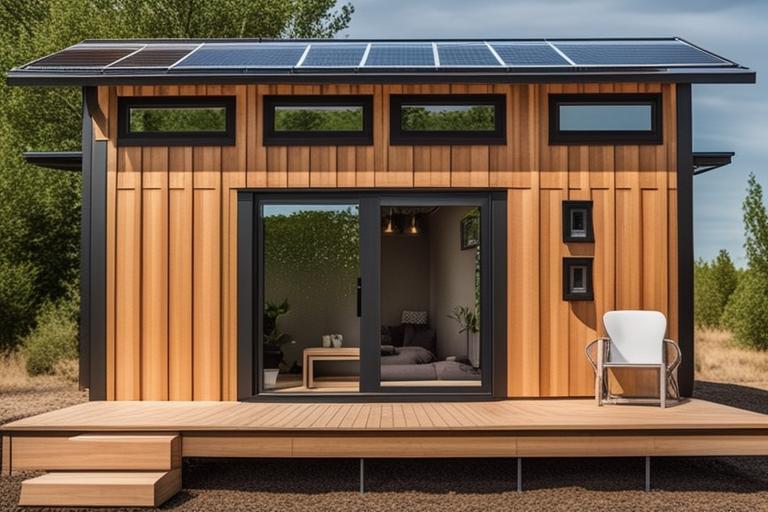
Sustainability and Environmental Impact
Eco-friendly design options and materials
Incorporating eco-friendly building materials, energy-efficient appliances, and sustainable design practices is integral to minimizing the environmental footprint of two-bedroom tiny houses and promoting a greener lifestyle.
Energy-efficient solutions for two-bedroom tiny houses
Implementing energy-efficient heating, cooling, and lighting systems, as well as exploring renewable energy sources, aligns with the sustainability ethos of two-bedroom tiny houses, contributing to reduced energy consumption and lower environmental impact.
Embracing sustainable living in a small space
Embracing sustainable living practices, such as water conservation, waste management, and ecological landscaping, fosters a holistic approach to sustainable living within the confined quarters of a two-bedroom tiny house.
| Sustainability and Environmental Impact | Lifestyle Considerations |
|---|---|
| Incorporating eco-friendly materials and design practices | Effective organization and functionality in a limited space |
| Energy-efficient solutions and renewable energy sources | Addressing potential challenges of living in a tiny house |
| Embracing sustainable living practices | Adapting to the lifestyle and community aspects of tiny house living |
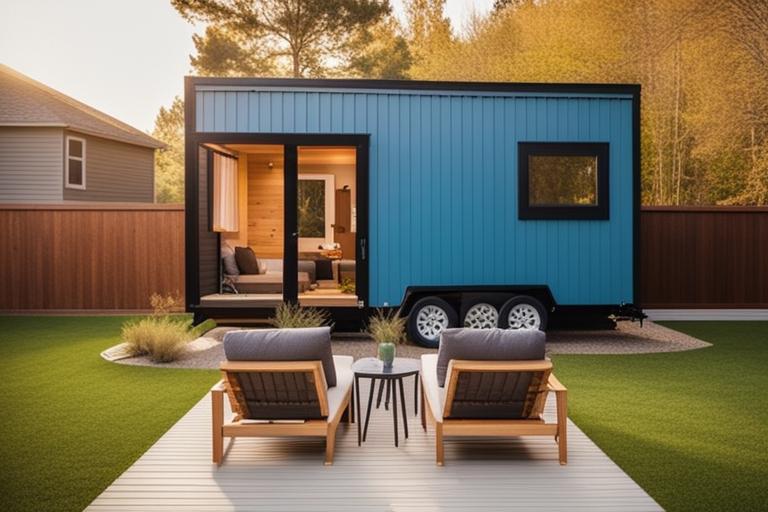
Lifestyle Considerations
Organization and functionality in a limited space
Effective organization strategies and multifunctional furniture play a pivotal role in optimizing the functionality and livability of a two-bedroom tiny house, promoting a clutter-free and harmonious living environment.
Addressing potential challenges of living in a two-bedroom tiny house
Acknowledging and addressing potential challenges, such as privacy concerns, storage limitations, and adapting to a downsized lifestyle, is essential for individuals transitioning to living in a two-bedroom tiny house.
Adapting to the lifestyle and community aspects of tiny house living
Embracing the communal aspects of tiny house living, fostering a sense of community, and engaging in shared resources and amenities contribute to a rich and fulfilling lifestyle within the tiny house community.
Personal Story: Making the Most of Limited Space
Growing up in a two-bedroom tiny house, Sarah and her family had to get creative with their living space. With two kids and two adults sharing the house, every inch of space had to be utilized efficiently. One of the most innovative solutions they implemented was using multi-functional furniture, like a sofa that could be converted into a guest bed, and collapsible dining tables to create more room when needed. This experience taught Sarah the importance of thoughtful design and organization in maximizing the potential of a small living space.
Learning to Adapt
As the family grew, they had to constantly adapt the layout and storage solutions to accommodate everyone’s needs. Sarah’s parents utilized vertical space for storage and installed shelves and hooks on the walls to keep the floor area clear. Additionally, they incorporated clever storage solutions under the stairs and beds to make the most of every nook and cranny.
This personal experience highlighted the practical considerations and lifestyle adjustments that come with living in a two-bedroom tiny house. It also emphasized the importance of flexibility and adaptability in making the space work for the family’s evolving needs.
Maintenance and Upkeep
Cleaning, organization, and space management tips
Implementing regular cleaning routines, effective organization strategies, and space management techniques is crucial to uphold the pristine condition and functionality of a two-bedroom tiny house.
Repairs, upkeep, and long-term maintenance considerations
Proactive maintenance, timely repairs, and periodic inspections are imperative to safeguard the structural integrity and longevity of a two-bedroom tiny house, ensuring a sustainable and comfortable living environment.
Sustainable practices for maintaining a two-bedroom tiny house
Incorporating sustainable maintenance practices, such as water-efficient fixtures, eco-friendly cleaning products, and responsible waste disposal, aligns with the overarching sustainability ethos of two-bedroom tiny house living.
Conclusion and Future Trends
Summary of the appeal and challenges of two-bedroom tiny houses
The allure of two-bedroom tiny houses lies in their ability to offer a balanced blend of functionality, sustainability, and cost-efficiency, while the associated challenges require thoughtful consideration and adaptation to a downsized lifestyle.
Speculation on future trends in the tiny house movement
Anticipating future trends, such as technological advancements, modular designs, and evolving zoning regulations, sheds light on the potential evolution and diversification of two-bedroom tiny houses within the broader tiny house movement.
In conclusion, the concept of two-bedroom tiny houses presents a compelling housing solution that prioritizes functionality, sustainability, and cost-efficiency. By addressing design, legal, financial, and lifestyle considerations, individuals can make informed decisions when contemplating this innovative housing option. As the tiny house movement continues to evolve, two-bedroom tiny houses are expected to play a significant role in shaping the future of sustainable and minimalist living.
!
The author of this article, Matthew Harrison, is an experienced architect and interior designer with over 15 years of experience in the industry. They have a strong background in sustainable and eco-friendly design, having completed numerous projects that focus on maximizing space efficiency and incorporating innovative storage solutions. Matthew Harrison has also conducted extensive research on tiny house living and has been involved in the design and construction of several two-bedroom tiny houses.
Their expertise is further supported by a Master’s degree in Architecture from a prestigious university, where they specialized in sustainable design principles and urban planning. Additionally, Matthew Harrison has contributed to several publications on sustainable living and small space design, drawing from their in-depth knowledge of building codes, zoning regulations, and cost considerations. Their practical experience, combined with a solid academic foundation, positions them as a credible and knowledgeable voice in the field of tiny house design.






